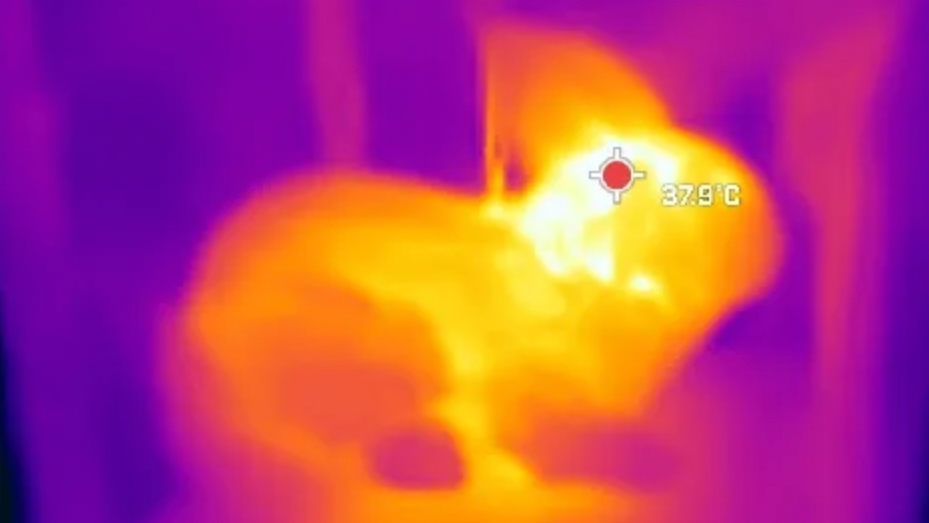Robot rabbits help catch pythons in Florida

This toy rabbit is on a snake catching mission!
- Published
This robot rabbit might look cute and cuddly, but it's certainly not a toy.
In fact it has a very important job to do - helping experts in Florida, in the US, to catch a particular kind of snake.
The team's job is to help control the number of Burmese python snakes in the area of south Florida.
The robots are designed to look like marsh rabbits, an animal that pythons love to eat.
The robot rabbits even produce heat to make them more realistic and give off a smell which is designed to attract the pythons.
- Published22 July
- Published22 October 2023

This infrared camera shows how the rabbits have been designed to produce their own heat
The robot rabbits are remote-controlled, solar-powered and even have cameras which can look out for signs of movement that would show if a python is close by.
When a snake is detected the team will then send out a snake wrangler who can capture the python.
Scientists at the University of Florida came up with the idea, and it was funded by the South Florida Water Management District, who want to get rid of pythons from the area.
The team haven't yet been able to see how effective this idea is at attracting pythons, but hope to have more data later this year.

Burmese pythons are native to many countries in South and Southeast Asia - but certainly not Florida!
Scientists want to catch the pythons because this kind of snake isn't native to the area and they are damaging to other species.
In fact, the pythons are thought to have caused population declines of over 85% among native animals like raccoons, opossums, bobcats, marsh and cottontail rabbits and foxes, all of which they hunt for food.
Many of the pythons now causing problems started off as pets, but were released into the wild by their owners either by accident or on purpose.
With no natural predators to keep their numbers in check their population has increased over time causing the problem to become worse.
